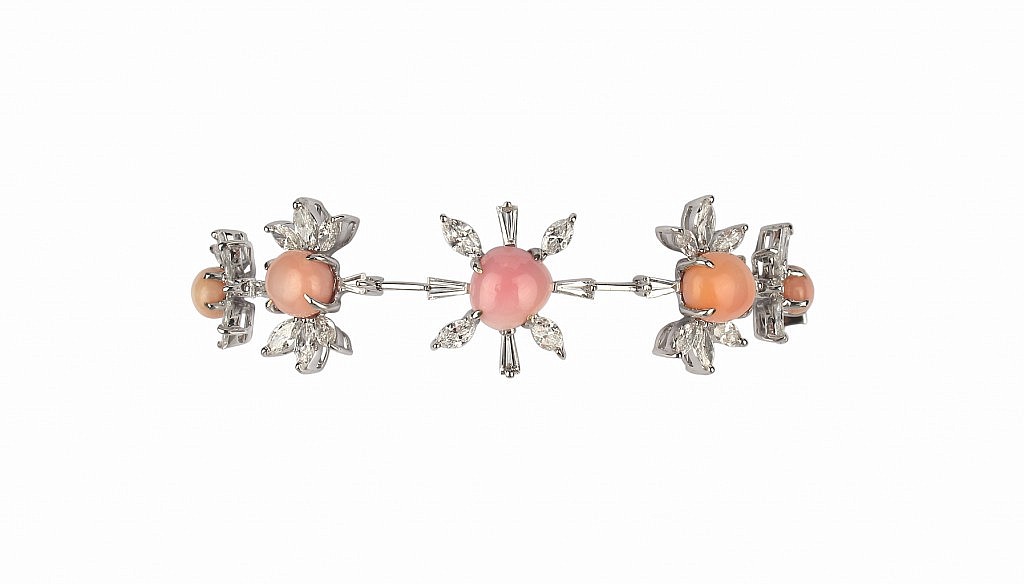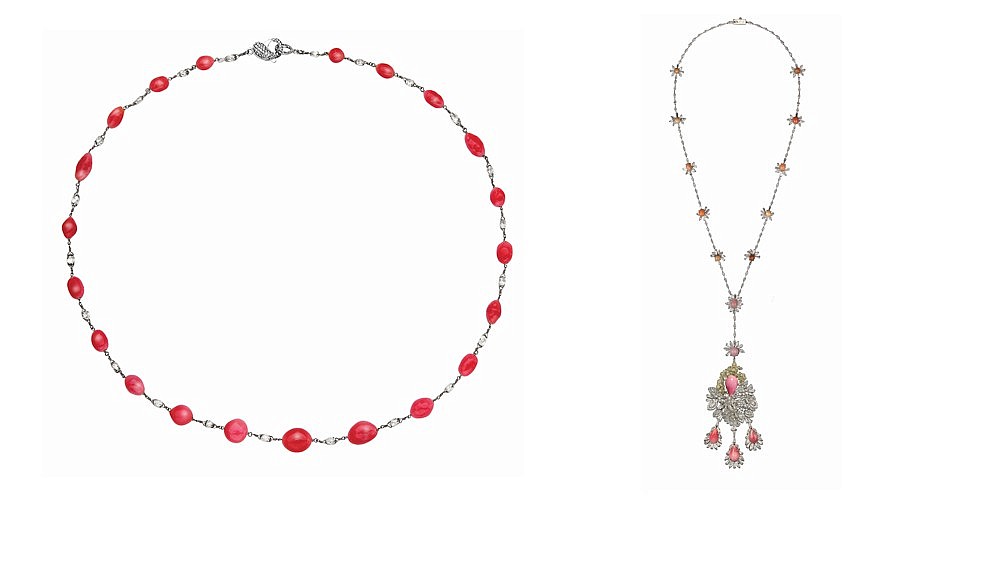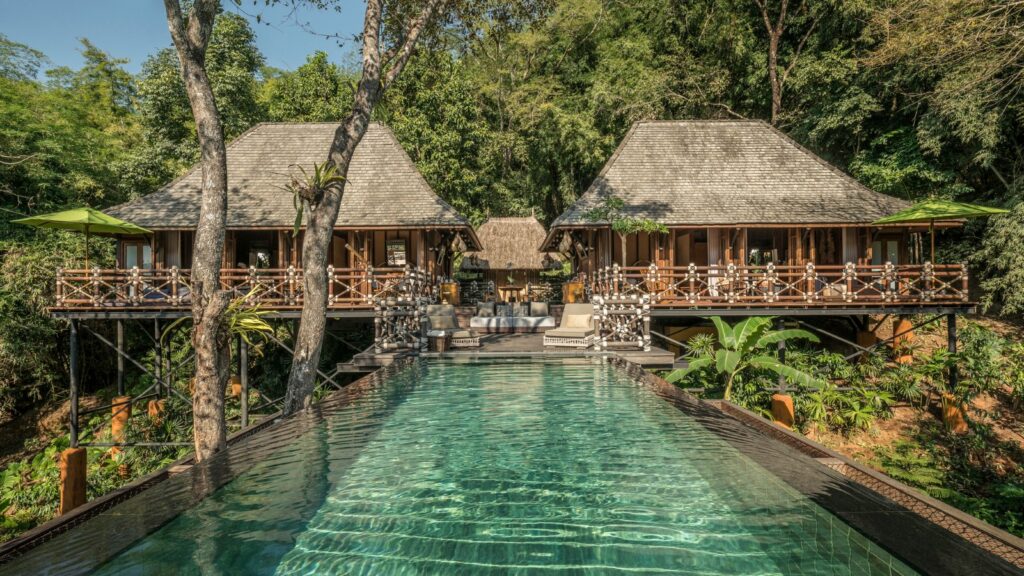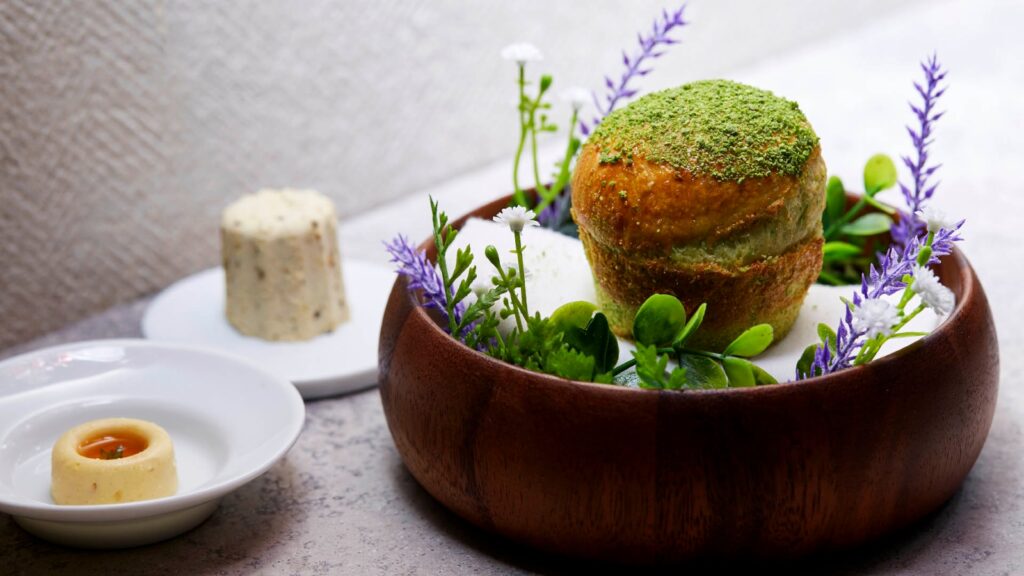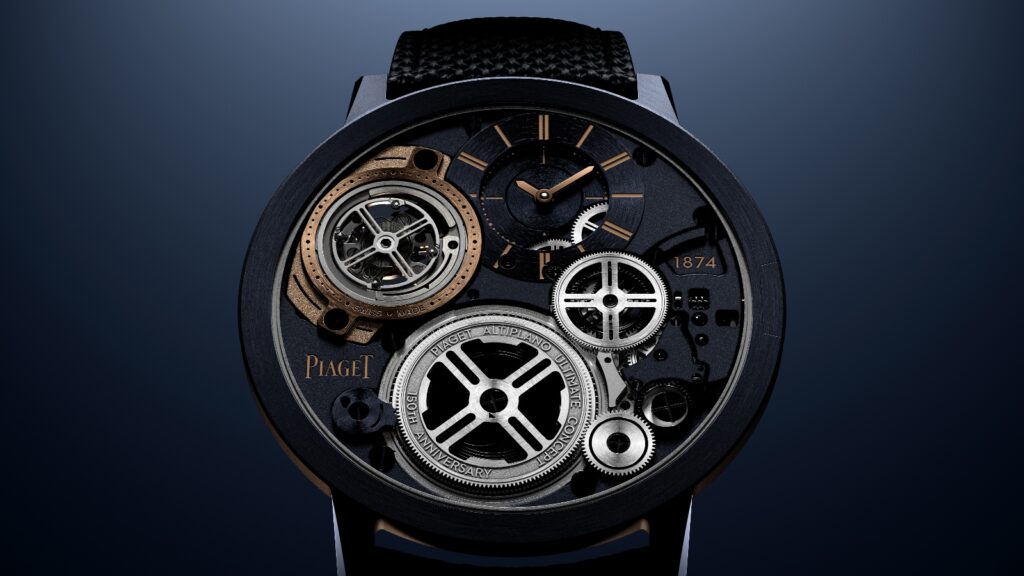in the pink
Patience is a virtue — just ask Bina Goenka, who spent more than a year searching for the hard-to-find queen conch pearls for her latest jewellery collection. “No two conch pearls are ever the same,” says Goenka, who is the designer and founding CEO of her brand. “It could be any shade of pink or pomegranate, even brown, orange, ochre — anything.” She notes that it can take years to find quality specimens and even decades to create matching sets for a single design.
Goenka divides her time between London and Mumbai, and her sources canvass the Caribbean Sea and the Gulf of Mexico for the rare queen conch mollusks that produce her jewellery’s distinctive pearls (they also scour estate sales for previously harvested pearls). “The material is so rare,” she says, “and the sheer mystery and uncertainty of what will be found makes it exciting.” Among the discoveries featured in her new Natural Fancy Pearl Collection are pink and peach specimens that have been set in diamond-covered white-gold settings evocative of flower petals and delicate leaves.
These pearl types are among nature’s most elusive treasures. The pearl forms in the queen conch, and only about one in every 8,000 shells produces a gem-quality example. Pink and peach are the most coveted colours, but other hues include crimson and orange. Other rare pearls include the melo melo: golden, round, and large (sometimes as big as a golf ball), from the melo melo marine snail, which lives primarily in the South China Sea and the Gulf of Thailand. Clams also fall into this category. While any bivalve can produce pearls, clams rarely do — making their porcelaneous pearls all the more valuable. They are formed naturally in either salt or fresh water and cannot be farmed.
